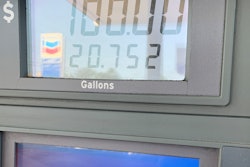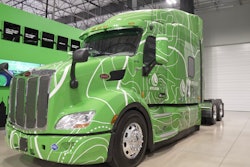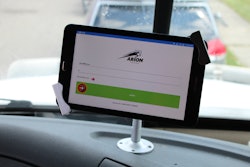A statement is said to be “self-evident” when it is stating something that everyone already knows and understands.
A familiar use of this is from the Declaration of Independence. "We hold these truths to be self-evident..." Were it only that easy in today's world of opinion-based social media, where facts seem open to wide-ranging interpretation.
My truism today is that Class 8 battery electric trucks are not yet suited to replace long haul diesels.
I thought that this point was fairly obvious since the range for today's production heavy-duty BEVs from multiple manufacturers hover between 150 and 250 miles per full charge. Yet I continue to read headlines from major, respected research groups that state this truism as if it is some new nail in the coffin for all BEVs versus other technologies.
This begs the question, are these reports chasing headlines? Trying to influence impressions of the technology’s readiness? Are they reflecting some bias or vested interests?
It always amazes me how quickly the discussion of replacing Class 8 diesel trucks jumps to the assumption that all heavy-duty trucks are long haul (600-plus miles per day) and always operate at 80,000 lbs. gross vehicle weight (GVW). In reality, long haul is less than 10% of trucks used in the U.S., and the distribution on vehicle weights is not so easy to characterize.
Vehicle tare weight and range are indeed definitely important topics in talking about electric trucks. In NACFE’s recent market segment report, Electric Trucks Have Arrived: The Use Case For Heavy-Duty Regional Haul Tractors, I outlined the relationship between range and weight for production BEVs and provided real-world data on actual operating vehicle weights. Range and weight are two factors that are clearly related. Some examples discussed in the report are worth reviewing.
Heavy loads, like beverage delivery to stores, are done by heavy-duty trucks that typically travel less than 100 miles per day, some less than 50. The drivers of these trucks have to unload product at each stop, so the trucks have shorter range needs. These also are usually one-shift operations due to store delivery time windows.
Lighter loads — those that cube out — like furniture, snacks, e-commerce packages, etc., have no issues on these routes under 100 miles a day. This is what NACFE terms short regional haul.
Longer ranges are feasible for heavy-duty BEVs for daily mileage between 100 and 200 miles. NACFE calls this medium range regional haul. As ranges increase beyond 200 miles, permissible payload weights start decreasing. However, that is a very simplistic view.
Range can be reliably extended, for example, through effective use of regenerative braking and one pedal driving. In NACFE’s Run on Less – Electric demonstration, four Class 8 BEVs saw up to 25% energy recovery from regenerative braking. This effectively makes a 400 kWh battery operate as if it were 500 kWh.
A brute-force approach to extending range above 200 miles is adding more battery packs. Extra battery packs are like extra diesel fuel tanks. For example, changing from a 100-gallon diesel fuel tank to a 200-gallon fuel tank could give a truck another 700 miles of range between fuel stops, but also adds 750 lbs. of tare weight. Current heavy-duty electric truck batteries may use 2 kWh/mile. Adding a 100 miles range then means adding 200 kWh of battery pack and the significant weight that comes with that.
Adding more battery packs to get range is a very unimaginative way of extending BEV range, and more creative solutions are out there. An analogy to consider is that military aircraft designers long ago figured out smarter ways to extend the range of aircraft without adding plane weight. The planes can literally fly around the world through the use of mid-air refueling. Increasing the range of electric trucks is not constrained to just adding battery packs.
Three active Department of Energy (DOE) Vehicle Technologies Office projects discussed at the recent Annual Merit Review (AMR) show that more intelligent approaches to extending range are viable.
The Kenworth project ELT262, Long-Range Heavy Duty Battery-Electric Vehicle with Megawatt Wireless Charging, is demonstrating that a 660-kWh battery pack Kenworth Class 8 tractor can reliably enable two-shift daily operations exceeding 400 miles per day. This demonstration is in concert with UPS operations between Seattle and Portland. UPS is operating double 28' trailers and expects there to be no issues with their daily freight weight versus a diesel tractor. The rapid megawatt wireless charging allows 170 freeway miles of charging in less than 30 minutes.
The Daimler Trucks North America project ELT259, Development and Commercialization of Heavy-Duty Battery Electric Trucks Under Diverse Climate Conditions, intends to demonstrate production level Class 8 BEVs capable of 250 miles per day that can meet 70% of U.S. freight movement. This project is demonstrating that a maximum daily range of 807 miles is possible through en route charging for a fully loaded 80,000 lb. GVW tractor-trailers operating at 2.165 kWh/mi in 55° F weather. The project is also demonstrating grocery delivery starting at 80,000 lbs. GVW with two daily trips of 130 to 150 miles of range and port drayage with a daily range of 210 to 300 miles. These demonstrations are in concert with UPS and Meijer. Testing has been done down to -35° F in Minnesota. DTNA has operated six reliability and growth early production trucks at 450 miles per day in testing.
The Volvo Group project ELT260, Improving the Freight Productivity of a Heavy-Duty Battery Electric Truck by Intelligent Energy Management, is demonstrating a life cycle cost effective Class 8 battery electric vehicle using an intelligent energy management system capable of commercial operations exceeding 250 miles per day with increased efficiency compared to 2015 to 2020 Volvo diesel baseline vehicles.
I have no argument that adding battery packs to achieve range can impact allowable freight weight. One BEV manufacturer estimates up to a 350-mile truck with a 753 kWh battery, but it weighs in at 29,000 lbs. There will be niche markets where even these heavier trucks will be suitable to convert to battery electric power.
But as the three DOE AMR projects illustrate, there are other ways to extend range without increasing battery pack size to get beyond 250 miles per day. Below that range, BEVs are well suited to the short and medium range regional haul routes. They have the lowest operating costs of all the zero-emission alternatives.
Yes, truisms like “water is wet”, “the sky is blue”, and “BEVs are not well suited to long haul” are real. Thanks to both current and future researchers for repeatedly studying that self-evident reality — what colloquially might be described as beating a dead horse.
The question is why does this topic continue to make headlines? Well, it’s about human nature or, more accurately, attention span. Headlines — a few words at most — can have a huge impact on opinions. Reading just the headlines of a recently released report one might conclude that electric trucks are not suitable for heavy-duty trucking and actually not much benefit to the environment. Digging into the report finds they only are discussing long haul and assumed a whopping 1,622 kWh battery pack in the comparison to hydrogen and fuel cell. There is no argument with that; that would be a heavy, impractical truck.
But, spoiler alert, no manufacturer today with production level trucks has plans for a 1,622-kWh battery in a truck – a point that was missed in the detailed analysis and only the continued 2017 marketing by one start-up truck manufacturer that suggests a range of 500 miles on one charge is viable (yet to be seen) with realistic freight weights.
The headlines also lose details, such as green hydrogen also depends on electricity — 2x to 3x the energy required to go the same distance as a pure BEV.
Chasing headlines is fundamental to marketing and advertising. Influencing perception is the goal of both. Fact-based decision making takes more work.
We live in a headline world, constantly exposed to both misleading and factual statements. It can be difficult to discern which is which. Reading beyond the headlines takes time. Comparing sources takes effort and often requires your own testing. But the truth eventually is self-evident when fleets drive the battery electric trucks they bought, or they see their competitors capturing part of their profits by better applying available technologies.
Choosing the right truck for the right application still is key to a fleet’s success. The new array of zero-emission and near-zero-emission powertrain technologies each optimize better (or different) duty cycles. However, there are many ways to extend the range of BEVs.
Reading beyond the BEV headline chasers now can improve a fleet’s bottom lines later.












